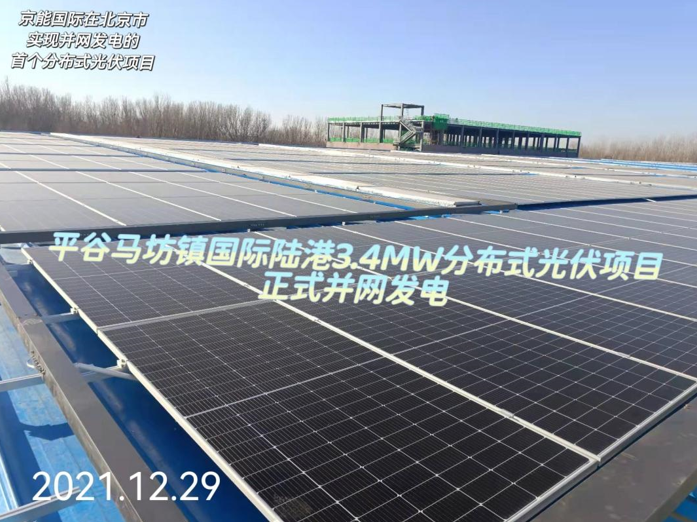At 10: 58, December 29, 2021, Beijing Energy International’s 3.4MW distributed photovoltaic project in Mafang Township, Pinggu District, was successfully connected to the grid for power generation. The project is located in one of the four major logistics bases in Beijing, namely, the Mafang Township Logistics Base in Pinggu District. The idle rooftops such as cold storage and power supply and distribution centers in the park are used for construction. According to power generation mode of “serving self-use and surplus electricity connected to the grid”, the total installed capacity of the project is 3.4MW, and the estimated average annual power generation after grid connection is 2.88 million kWh.

Since the project commenced on December 15, 2021, it has been strictly controlled and carefully managed in terms of safety, quality, schedule and cost, and has made efforts to overcome the adverse effects of Covid-19, equipment and material price hikes, etc. All the construction was completed on December 28, 2021, and it passed the acceptance of power supply company, and successfully obtained the 0.3 yuan/kWh municipal subsidy according to local policy.
The Mafang project is the first distributed photovoltaic project of the company in grid-connected power generation in Beijing, and it is also the first such project to implement local strategy of developing photovoltaic project in Pinggu District. The project is in line with the company’s efforts to accelerate the construction of a green, multi-functional, intelligent and collaborative clean energy industry ecosystem. When the project is up and running, it will promote the healthy development of clean energy industry in Mafang Township, boost the transformation and upgrading of local energy structure, translate regional resource into economic advantages, realize sustainable development of local society and economy, help attain the dual carbon goal and rural revitalization strategy, and effectively create a model of cooperation between government and enterprises.